|
[VIEWED 391115
TIMES]
|
SAVE! for ease of future access.
|
|
|
|
|
|
JPEG

Please log in to subscribe to JPEG's postings.
Posted on 04-18-09 9:46
AM
Reply
[Subscribe]
|
Login in to Rate this Post:
1  ?
?  Liked by
Liked by
|
| |
Last edited: 11-Jun-09 09:12 AM
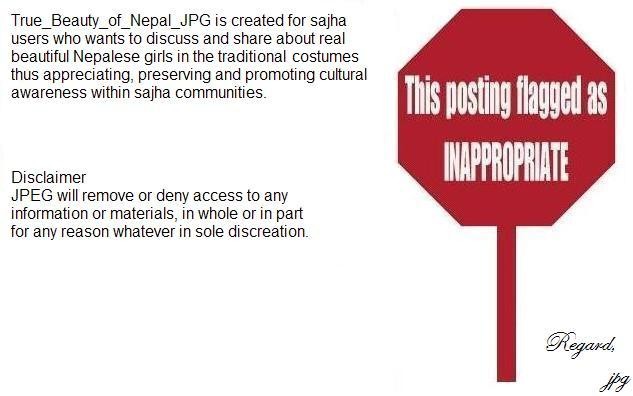
|
| |
|
|
|
|
JPEG

Please log in to subscribe to JPEG's postings.
Posted on 06-14-09 2:20
PM
Reply
[Subscribe]
|
Login in to Rate this Post:
0  ?
? 
|
| |
Nepali beauties at time of "Ubhauli", where people starts to sow crops.
Last edited: 14-Jun-09 02:20 PM
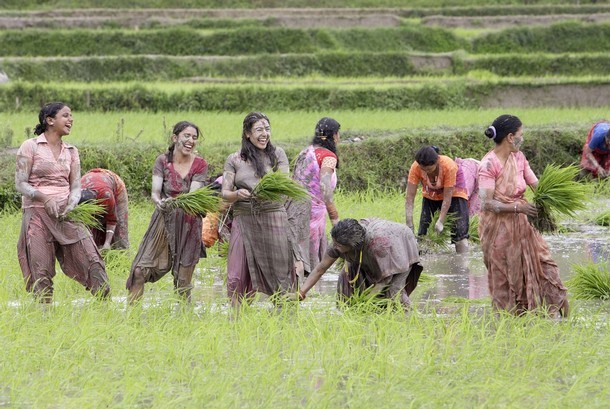
|
| |
|
|
JPEG

Please log in to subscribe to JPEG's postings.
Posted on 06-14-09 3:44
PM
Reply
[Subscribe]
|
Login in to Rate this Post:
0  ?
? 
|
| |
True_beauty_of_Nepal

|
| |
|
|
JPEG

Please log in to subscribe to JPEG's postings.
Posted on 06-15-09 8:21
AM
Reply
[Subscribe]
|
Login in to Rate this Post:
0  ?
? 
|
| |
Smiling Nepali beauty. "Because of your smile, you make life more beautiful."

|
| |
|
|
JPEG

Please log in to subscribe to JPEG's postings.
Posted on 06-15-09 11:22
AM
Reply
[Subscribe]
|
Login in to Rate this Post:
0  ?
? 
|
| |
Just a another day in the life of a True_Beauty_of_Nepal
Last edited: 15-Jun-09 11:22 AM

|
| |
|
|
dekchidriver

Please log in to subscribe to dekchidriver's postings.
Posted on 06-15-09 4:35
PM
Reply
[Subscribe]
|
Login in to Rate this Post:
0  ?
? 
|
| |
Wonderful pictures Mr. JPEG. Thanks for sharing!
|
| |
|
|
JPEG

Please log in to subscribe to JPEG's postings.
Posted on 06-15-09 5:24
PM
Reply
[Subscribe]
|
Login in to Rate this Post:
0  ?
? 
|
| |
JPG of Magar ni beauties taken by JPEG The Kham Magar who live in the rugged highlands of Rukum, Salyan, Rolpa and Pyuthan districts in Rapti Zone are thought to have migrated from Siberia. This southward migration is evident in various shamanistic practices and other cultural features. They claim to occupy the original Magar homeland in Nepal from whence migration to the south and east proceeded. Interestingly, the origin of Mangar tribe as mentioned in Kirat chronology is a place in the north called Shin. From there, a group of people under the leadership of two leaders came to the south. The names of the leaders were Shing Mangar and Chitu Mangar. The people of the southern country called them Tangsang Thapa which means the people came from the far away north. Later on, these Mangar tribes multiplied and were divided into 12 groups. Under twelve leaders who called themselves Barah Mangars, the names of the twelve Mangars were Shinjali Thapa, Hongjali Thapa, Hungchun Thapa, Chhodey Thapa, Pudkey Thapa, Mundey Thapa, Udhro Thapa, Bairong Thapa, Ishar Thapa, Barahi Thapa, Hangyung Thapa and Hangshe Thapa. ~ "Kirat Janakriti" by S. K. Chatterjee compiled in "The History of the Kirat People", 2003 Religious Belief of Magar
The Banyan Hill Magar's pantheon includes a great many deities, or spirit beings, most of whom a family at one time or another will try to influence. The most numerous deities are those who are pleased, or at least placated, by an offering of a live sacrifice. The pantheon worshiped in Banyan Hill with live Sacrifices is dynamic, with some deities being added as others are forgotten. More than anyone else, shamans keep people informed of the pantheon's changing and locally relevant dimensions. Very frequently a shaman learns of a new and troublesome deity in a dream. Three especially important Banyan Hill deities began their existence long ago as Magars. Two are believed to have become fearsome witches, so threatening that people avoid mention of them after dark. Called "Grandfather-Grandmother," they are conceived of as one, and once a year in the lunar month of Mangsir (November-December), the two are worshiped communally, often with the slaughter of two pigs. The sacrifice to Grandfather-Grandmother does not follow the pattern described earlier. Appropriately, it is more like the sacrifice to ancestors made by Magars without the help of a Brahman. Except for the autumn festival of Dasain, the day of annual offering to Grandfather-Grandmother is when relatives do the most visiting. The third transformed Magar deity is Mandale. While still a human, he changed himself into a tiger, and thereafter he never reverted to human form. Many say that Grandfather-Grandmother are his maternal uncle and aunt. The major sacrifice to Mandale is a cooperative effort carried out by several neighborhoods, including Banyan Hill, in the month of Mangsir. The pig is considered the most appropriate live sacrifice. It is believed that tigers, all of whom are manifestations of this spirit, will not attack villagers or their cattle when Mandale is correctly propitiated. Each Magar household has a male deity who comes to reside in the kitchen room whenever a new house is built. This deity's effects are limited to the family alone and it is the only deity to be propitiated by live sacrifice within the house. He looks to the well-being of family members and their cattle and crops, and he is regularly propitiated in the month of Jeth (May-June). The usual sacrifice is a cock promised during the ritual of the previous year. Besides the promised sacrifice of the "old cock," the central feature of the kitchen ritual is the offering of nine leaf plates containing rice and a piece of yeast used for making beer. A Magar's prayer during the ritual is the following: "I am remembering you every year. Please take care of my family." work referenced: The Magars of Banyan Hill by John Thayer Hitchcock, 1966 Himalayan anthropology by James F. Fisher The History of the Kirat People, 2003 Magar Studies Center
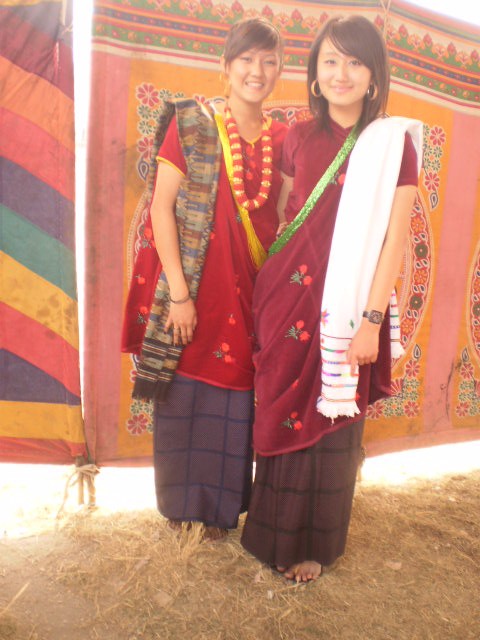
|
| |
|
|
JPEG

Please log in to subscribe to JPEG's postings.
Posted on 06-15-09 6:55
PM
Reply
[Subscribe]
|
Login in to Rate this Post:
0  ?
? 
|
| |
Lepcha ni beauty. The Lepcha (also known as the Rong, Rongke, or Rongpa). They are the aboriginal inhabitants of present day Sikkim. Many Lepcha are also found in western and southwestern Bhutan, Tibet, Darjeeling and the Ilam District of eastern Nepal. The ancient Lepchas are believed to have originated from the foothills of Mount Kanchanjunga, which they revere as their deity. They have their own script, and their holy scripture is called Astachyo. In Lepcha society, alcohol is considered "clean". There is no animosity and caste system among the Lepchas. The dead are taken out through the broken wall of the house and are buried. The Lepcha social council is called Rong Senungthi. According to their mythology, a place called Mayal Lyang near Mt Kanchanjungha is their original abode. Besides Ilam, they are found in small numbers in Dhankuta in Nepal. Outside Nepal, this tribe is found in Sikkim and in Darjeeling of West Bengal. The census of 2001 records their population at 3,660(NEFIN) and hence they are put in an Endangered Group. The ancient religion of Lepchas (Lapchas) is called ‘Munlom', almighty god is called ‘Takbo Thingum', the master of wicked souls is called ‘Chhyugemung Pano' and shamans are called ‘Bungthinglom' (Chemjong, BS2026). Nowadays Lepchas are seen accepting all three religions, ie Buddhism, worshiping of nature and Dhami-jhankribad (shamanism). They are widely influenced by Dhamis and Jhankris besides Lamas. Their dhami is called ‘Mun Mun'. The better group of Mun Mun is called Tang-Li Mun and the worse group is call Mun-Mook Mun in accordance with these beliefs. In addition to these, Padem or Bonthing, Yaba (female Yama) is believed to have come from Limbus and Pau from Sikkimese Bhotes (Gorer, ibid: 215-216). They are considered to be rich in folklore. Emergence of Lepcha: According to the "The History of the Kirat People" 2003, The Rong or Lapcha Kirat people originated from three sources. The first group who claimed its origin from the west or Elam of Southern Persia to Eastern Nepal was called the Elammu or Elamite family. Arammu were residents of Aram land, or Syria. The second group of Khamba Lapchas, migrated from Kham of Eastern Tibet or Suchuwang province of China. The third group, Rong Lapchas who belonged to Nam Maw and Tai Tembe, Nam Gam Tembe of Mokwan locality of Unan province of Southern China, had entered Nepal via North Burma with their leader Mung Maw Rong. All three groups settled and intermingled in East Nepal and claimed themselves to be Rong or Mutan Chi Rong- a distorted version of Mung Tai Chi Rong. The term Lepcha was coined by their close neighbors the Bahing Rai tribe for their residence was situated in the eastern corner of Kirat land of modern Nepal. Based on this some anthropologists suggest they emigrated directly from Tibet to the north,or said to be migrated from Eastern Mongolia. while others suggest a more complex migration that started in southeast Tibet, migrated to either Thailand, Burma or Japan, then navigated the Ayeyarwady River and Chindwin rivers, crossed the mighty Patkoi range coming back west, and finally entered into ancient India. While migrating westward through India they are surmised to have passed through southern Bhutan before reaching their final destination near Kanchenjunga. The folklore of the Lepcha or the Rong people do mentions that they are the descendant of Limbu people.
Last edited: 15-Jun-09 06:57 PM

|
| |
|
|
Maylumaya

Please log in to subscribe to Maylumaya's postings.
Posted on 06-15-09 10:05
PM
Reply
[Subscribe]
|
Login in to Rate this Post:
0  ?
? 
|
| |
Natural Beauty of Nepal 
|
| |
|
|
JPEG

Please log in to subscribe to JPEG's postings.
Posted on 06-16-09 9:11
AM
Reply
[Subscribe]
|
Login in to Rate this Post:
0  ?
? 
|
| |
Nepali beauties at time of "Udhauli", where people starts to harvest crops. Points to be taken.The majority population of Nepal are involved in agriculture and allied industries. The people engaged in this sector among women were 16% higher than men in total population. Women's involvements in agriculture to producing major crops such as rice, wheat, maize etc. In the irrigated area women work more than 11 hours per day whereas men do only 7 hours. In this different between women and men labors time and contributions, women work were still uncountable for national economical growth in Nepal.

|
| |
|
|
JPEG

Please log in to subscribe to JPEG's postings.
Posted on 06-16-09 10:06
AM
Reply
[Subscribe]
|
Login in to Rate this Post:
0  ?
? 
|
| |
Beautiful girl from Nepal.

|
| |
|
|
JPEG

Please log in to subscribe to JPEG's postings.
Posted on 06-16-09 1:08
PM
Reply
[Subscribe]
|
Login in to Rate this Post:
0  ?
? 
|
| |
Another Beautiful Nepali JPG i know of.

|
| |
|
|
JPEG

Please log in to subscribe to JPEG's postings.
Posted on 06-16-09 3:54
PM
Reply
[Subscribe]
|
Login in to Rate this Post:
0  ?
? 
|
| |
Gurung nis beauty.

|
| |
|
|
JPEG

Please log in to subscribe to JPEG's postings.
Posted on 06-16-09 7:06
PM
Reply
[Subscribe]
|
Login in to Rate this Post:
0  ?
? 
|
| |
Tamang nis beauty.
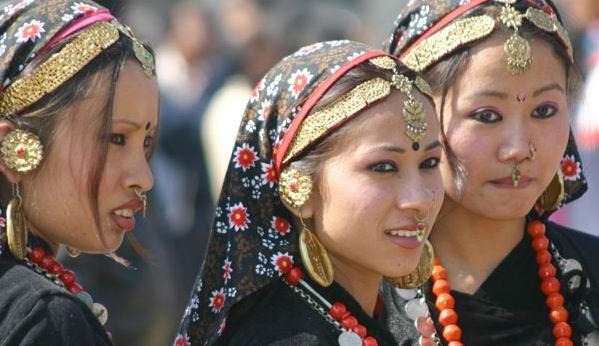
|
| |
|
|
JPEG

Please log in to subscribe to JPEG's postings.
Posted on 06-16-09 9:35
PM
Reply
[Subscribe]
|
Login in to Rate this Post:
0  ?
? 
|
| |
Sherpa ni beauty.
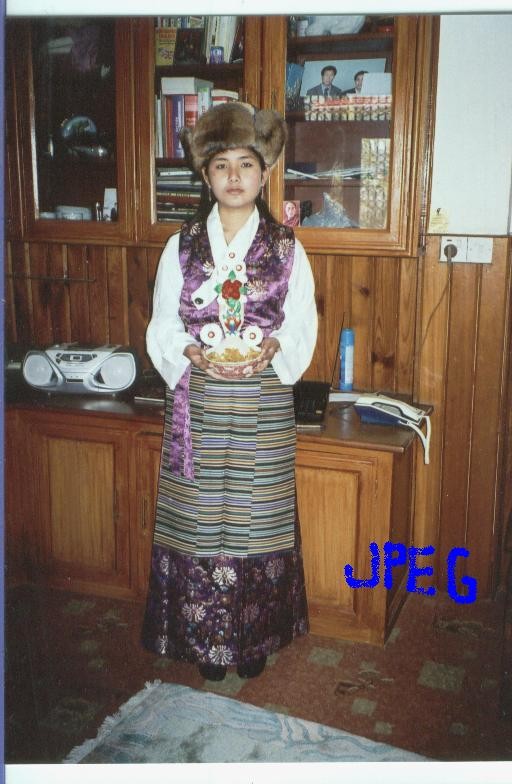
|
| |
|
|
JPEG

Please log in to subscribe to JPEG's postings.
Posted on 06-17-09 8:59
AM
Reply
[Subscribe]
|
Login in to Rate this Post:
0  ?
? 
|
| |
Gurung_Tamang_Sherpa ni Beauties at Losar. Nepal has diversity in its culture with many ethnic groups. Different community has different own moral language, traditions and festival. Among those Loshar festival is one of the great festival of Himalayan community. It is the New Year of Buddhist ethnic groups of Nepal and celebrated at the time of the new moon in February. This year Losar Buddhist ethnic group celebrated their New Year-2136. Losar means New Year, ‘Lo ‘refers Year and ‘ Sar’ refers the New. According to the Buddhist calendar this year ‘Sa Mo Lang Lo’ means this year is the year of cow. Losar is celebrated for 15 days, with the main celebrations on the first three days. On the first day of Losar, a beverage called changkol is made from chhaang (a Tibetan cousin of beer). The second day of Losar is known as King's Losar (gyalpo losar). Losar is traditionally preceded by the five day practice of Vajrakilaya. Although it often falls on the same day as the Chinese New Year (sometimes with one day or occasionally with one lunar month difference), it is generally not thought to be culturally directly connected to that holiday. It is culturally more related to Tsagaan Sar in Mongolia than to the Chinese New Year festivity. The Nepalese New Year, referred to as either Losar or Lhochaar, is celebrated by the Sherpa, Gurung, Tamang, Sherpa and Yolmo communities, who usually count their age by calculating Lho. According to Gurung calendar, Poush 15 (December 30) marks the beginning of another year. The Gurung people celebrate this important festival as Tola Lhochhar on the 12 month of the English calendar every year by taking blessings from respected elders and exchanging greetings among family members and friends. Scientific evidences have shown that the every year the longest as well as the coldest night falls on December 22. The Gurung community, however, believes December 30 to be the day, and by tradition, mark the day as the beginning of the New Year. Other three communities in Nepal usually celebrate Losar at the last week of January and first week of February based on the new moon of the first lunar month (in the Tibetan Buddhist Calendar). Points to be taken.There seems to have some misunderstanding among many Nepalese, including the media that Sherpas follow the Chinese calendar. This is not true. Sherpas do follow a lunar calendar, but it is based on the Tibetan calendar, not Chinese. Also, most of the papers always spell out Lhosar. The correct spelling is Losar. It is a Tibetan word meaning new year. "Lo" means Year and "Sar" means New. While "Lho" means South.
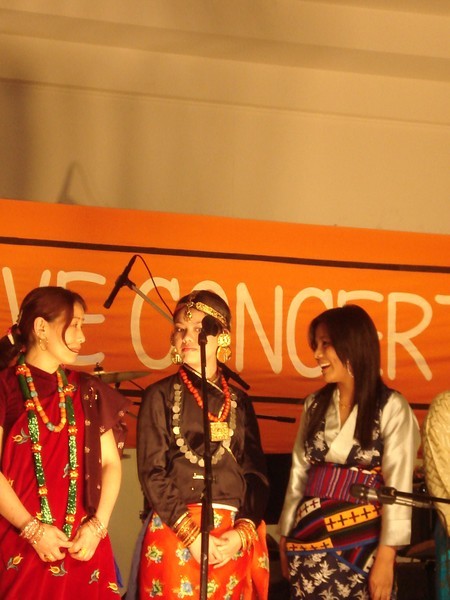
|
| |
|
|
JPEG

Please log in to subscribe to JPEG's postings.
Posted on 06-17-09 11:35
AM
Reply
[Subscribe]
|
Login in to Rate this Post:
0  ?
? 
|
| |
Newar ni beauty.
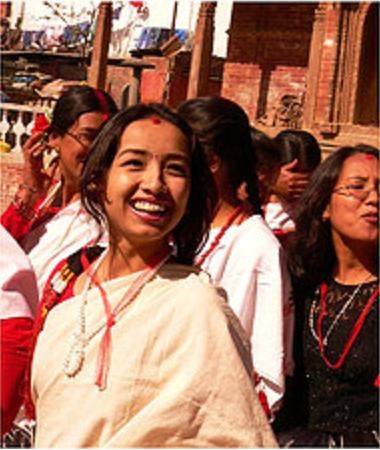
|
| |
|
|
JPEG

Please log in to subscribe to JPEG's postings.
Posted on 06-17-09 2:34
PM
Reply
[Subscribe]
|
Login in to Rate this Post:
0  ?
? 
|
| |
Beautiful Dhimal ni JPG by JPG Dhimal is part of the Kirat confederation that includes the Limbu, Rai, Yakkha, Sunuwar, Hayu, Koch, Thami, Tharu, Chepang, and Surel ethnic groups of Nepal that have been recogized by the scholars so far. Kirat was the earliest inhabitants of Nepal and Dhimals are one of the indigenous people of Nepal and India. In Nepal, Dhimals live on the peripheries of the districts of Morang and Jhapa. Dhimals are a minority indigenous nationality of eastern Terai settled along the border areas of Morang and Jhapa districts. They are dubbed as 'Dhimal' by Rajbanshis, 'Haiko' by Meches and 'Limbus of Terai' by the mountain people (Regmi, 1991:55). Their facial features, language and religious practices are so close to those of the Limbu people that they are also called the Limbus of the Terai. They also show the characteristic habits, quick temper and aggressiveness, of the Limbu people. Analysing the term, 'Dhimal', Tulasi Diwas (2039:2) has interpreted it to mean one vanishing on the edge of river. They consider the Rais (Khambus) of mountains, especially Athpaharaiya Rai, Limbus, Koches of Terai as their brethren. Their animistic religion is very close to other Kirant religion. They worship nature and other household gods. They worship various gods like Sakodir, the family god, Jaurage, or the god of ancestors, Gramdeer, or the god of village, Dharni Berang, or the god of hearth, etc. They believe in soul, ghosts and spirits. Their dhamis and jhakris or shamans are called Ojha. They have immense loyalty/allegiance towards such Ojhas. The community leaders of Dhimals are called Majhi, who officiates the settlement of disputes within the community. This practice is almost non-existent there today. They bury their dead like other Kirant people. Farming is their specialization. Dhimal women are famous for their traditional skills of weaving. Marriage can be conducted in any one way, ie by elopement, request or persuasion. Their population in Nepal according to the 2001 census was 19,539 while according to the 2001 Indian census, the Dhimal is one of the smallest tribes in India, totaling a number of approximately 981 people who continue to speak their native Dhimal language. They reside at Mallbari near Siliguri, West Bengal.

|
| |
|
|
i_nepali

Please log in to subscribe to i_nepali's postings.
Posted on 06-17-09 4:07
PM
Reply
[Subscribe]
|
Login in to Rate this Post:
0  ?
? 
|
| |
Jpeg bro, you've got one of the best thread here in sajha. I love all the photos you've posted so far. I especially like the accompanying information for each of the photos. But it beats me why there are some idiots who are flagging your post as inappropriate. Keep up the good work !!!
|
| |
|
|
JPEG

Please log in to subscribe to JPEG's postings.
Posted on 06-17-09 6:43
PM
Reply
[Subscribe]
|
Login in to Rate this Post:
0  ?
? 
|
| |
Sunuwar ni beauty. Sunuwar peoples believe themselves as Suryavanshi, family of the Sun. It is recognized that Sunuwar tribe is from Kirat group. Sunuwar peoples have their own socity, cultural aspects, costumes, and language so they are called indigenous people. In the time of Shah Dynasty, The King of the country became happy with the administrative works, armed service and other territorial works of Sunuwar peoples and His Majesty's granted the title of "Mukhiya". Still some Sunuwar peoples add the title "Mukhiya" at the end of their name. It is also believe that the group "Jirel" and "Surel" are also the sub-group of Sunuwar. Sunuwars have own ethnic identity like language, costumes, cultures etc. Sunuwar peoples' ancient habitation is Eastern hilly region of Nepal. The hilly landscape range of Likhu, Khimti, Sunkoshi and Bhotekoshi (Okhaldhunga, Ramechhap, Dolkha, Shindhuli, Khotang, Jhapa and Ilam Districts of Nepal) etc are the main habitation. Almost all houses in the village are made up of mud, stone and wood. Most traditional houses have artistic wooden windows and doors. Besides it, arts and crafts of mud, wood and stone etc are placed on the walls and corners in their traditional house. Now a days, Sunuwars are also involved in national indigenous group of people for the developement, preservation and for the promotion of the Sunuwar peoples and for the developement of the Nation as well. Points to be taken: "The Kirat are mentioned in Indian epic drama such as the Mahabharata. According to Nepalese traditions, they occupied the Kathamndu Valley before the Licchavi dynastry just prior to and during the years of the Chraistian era (Regmi 1969: 54-64). Nowadays the ethnic groups going by this name live in eastern part of Nepal: the Rais, Limbus, and Yakhas. The Sunuwars also claim to be Kirat. Shafer has shown that the Sunuwar dialect closely resemblences certain Rai dialiect (Shafer: 1953: 356-374). A large number of Sunuwars, when living in the capital or in India, abandoned their Sunuwar name for that of Kirat, as many people believe that they belong to the polluted "occupational caste" of the goldsmiths (Sunar)". ~ Himalayan Anthropology, Page 174 By James F. Fisher
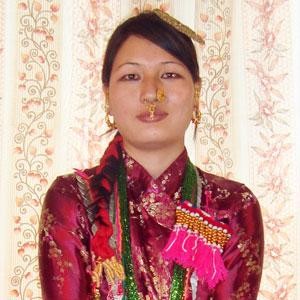
|
| |
|
|
teamlogo

Please log in to subscribe to teamlogo's postings.
Posted on 06-17-09 6:47
PM
Reply
[Subscribe]
|
Login in to Rate this Post:
0  ?
? 
|
| |
jpeg! did u all made these pics.....i dont think so.....dont try to be smart copying from other.
Last edited: 18-Jun-09 11:47 AM
|
| |
